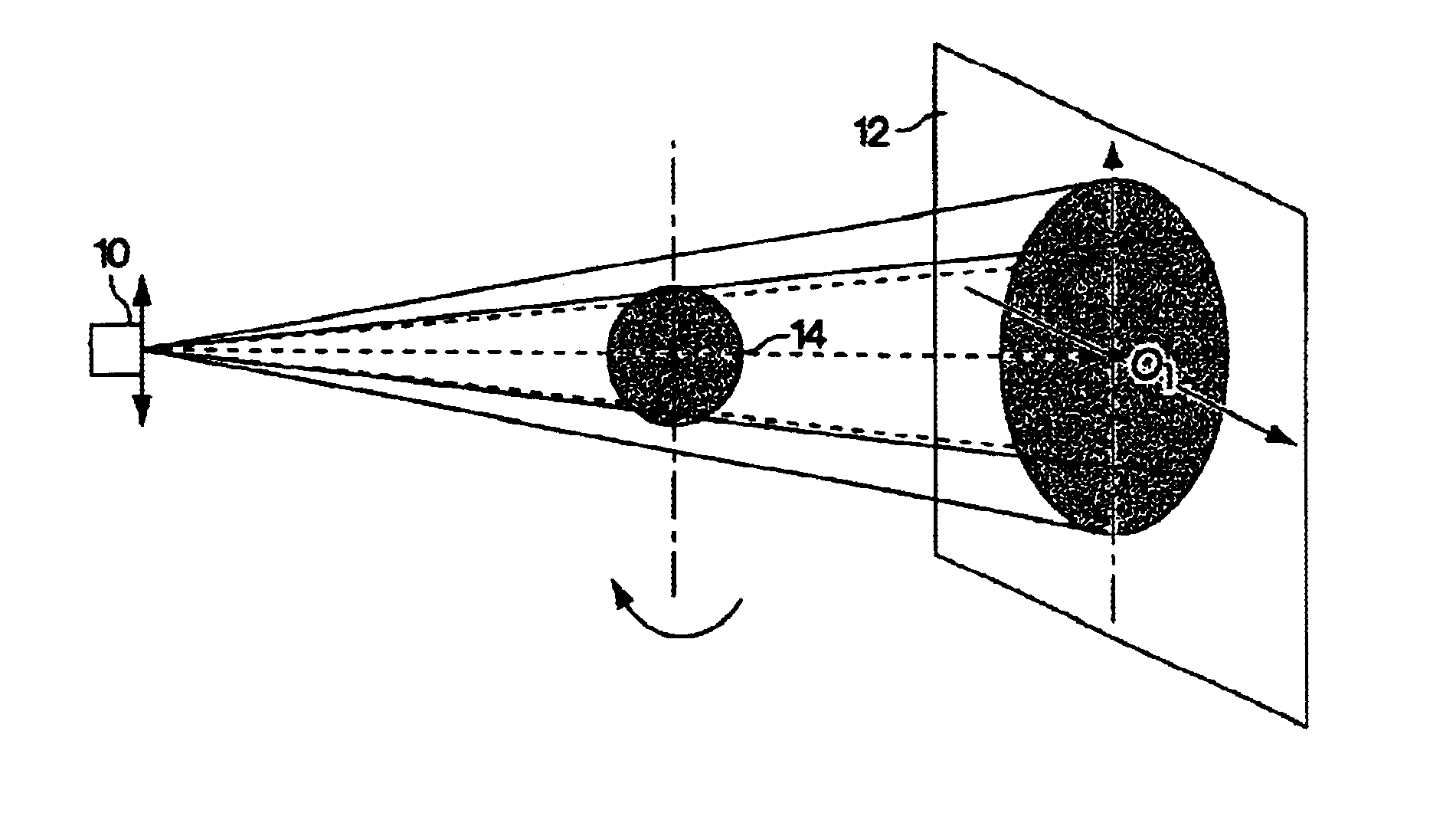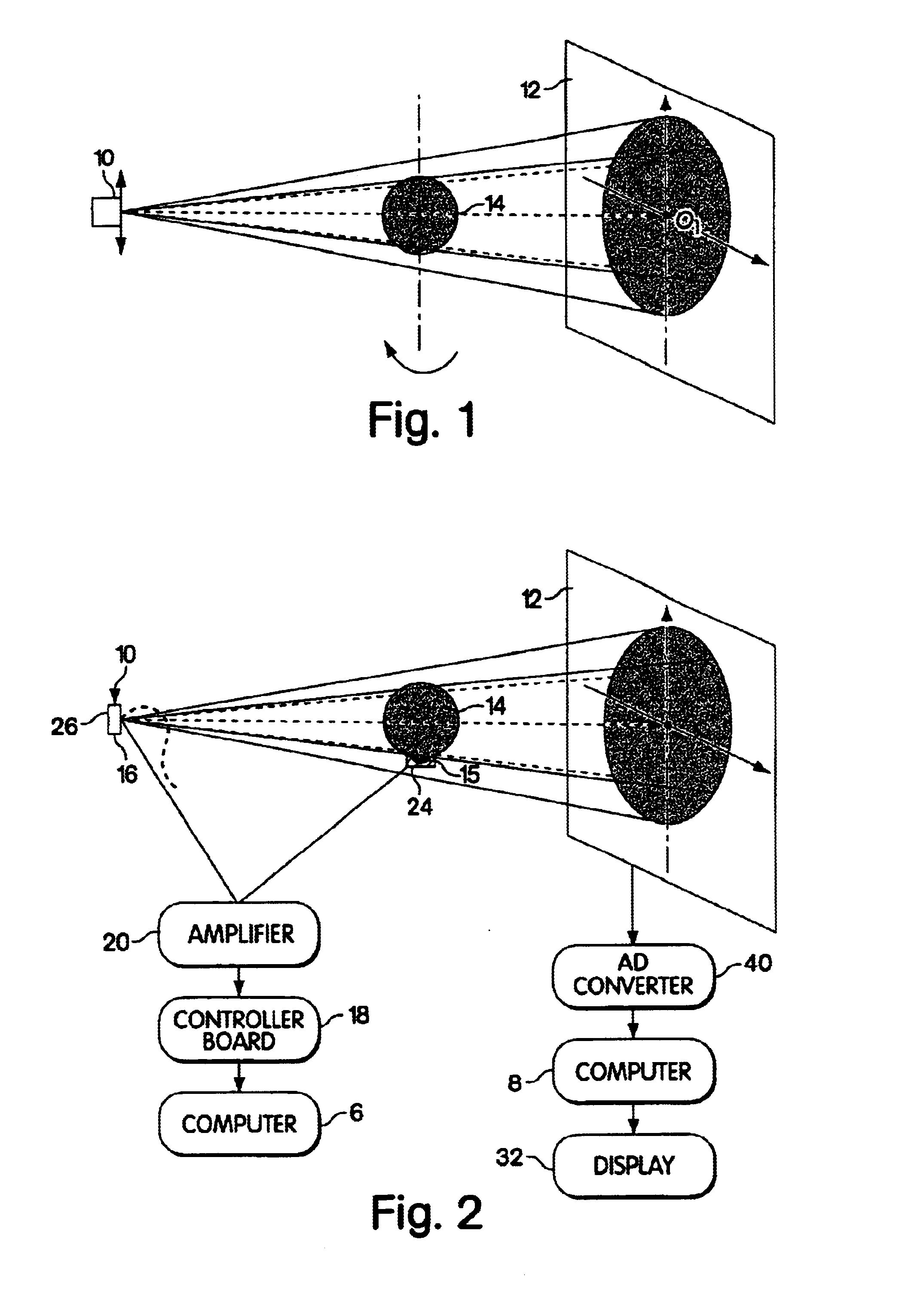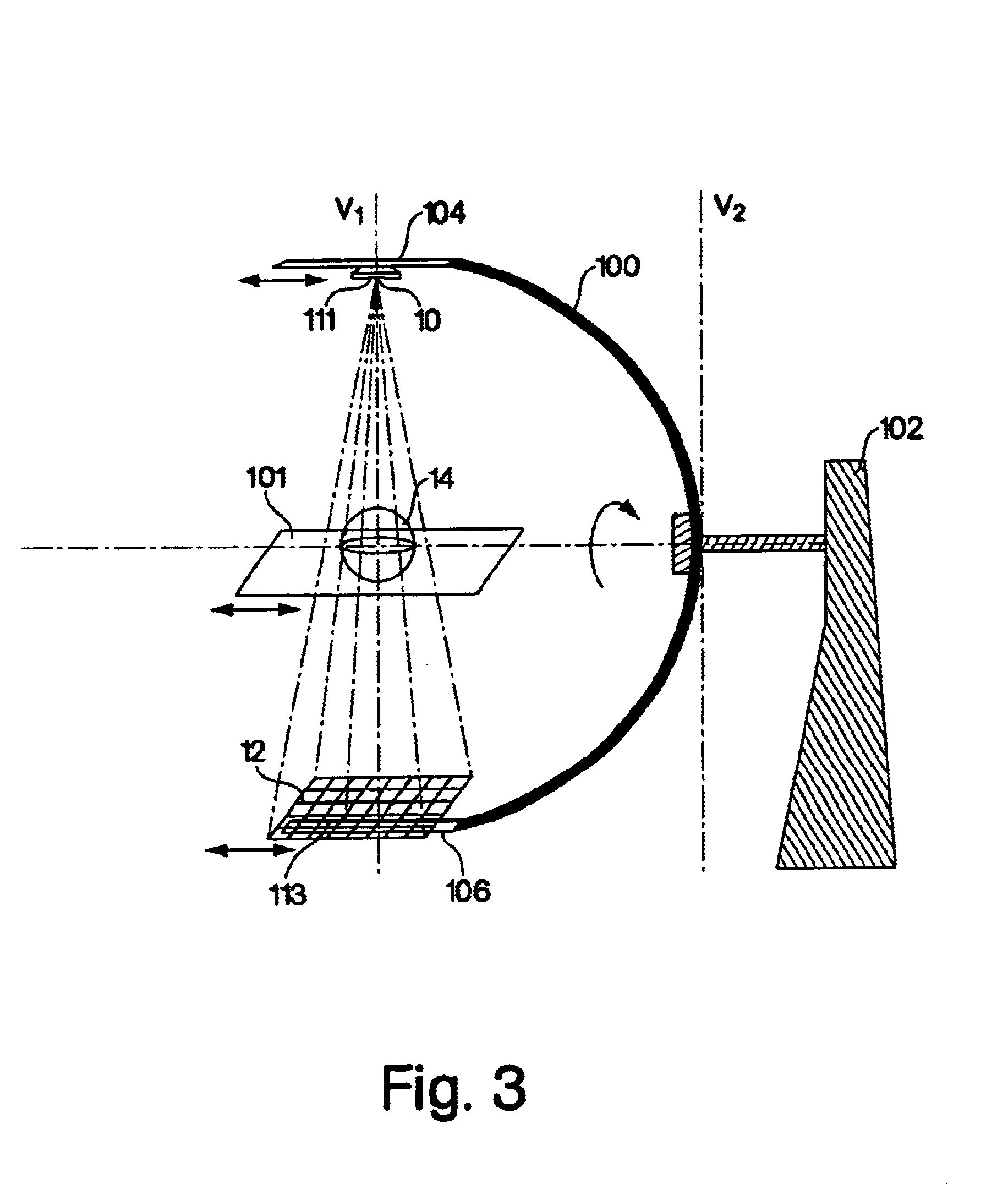True 3D cone-beam imaging method and apparatus
a cone beam and imaging method technology, applied in tomography, instruments, nuclear engineering, etc., can solve the problems of the most complex and expensive computation in cone beam imaging, and achieve the effects of accurate determination, better sampling performance, and improved image quality
- Summary
- Abstract
- Description
- Claims
- Application Information
AI Technical Summary
Benefits of technology
Problems solved by technology
Method used
Image
Examples
Embodiment Construction
FIG. 2 illustrates a suitable apparatus for generating and detecting a plurality of cone-beam projections from a radiation source as well as recovering the three-dimensional attenuation map inside the object being scanned from the collected cone-beam projection measurement. Specifically, the physical hardware of a cone-beam imaging system comprises a radiation source 10, a two-dimensional area detector 12 that receives the attenuated rays emitting from the point source and passing by the object 14, at least two motors 15 and 16 (the source and detector can be controlled by a single motor or separately by two different motors), which are accountable for the relative movement between the source-detector system and the object 14, an analog-to-digital converter 40 that converts the cone-beam signals detected by the area detector into a digital format that enters the computer system 8 as input, and the computer system 8, which stores, processes the converted cone-beam data to reconstruct...
PUM
 Login to View More
Login to View More Abstract
Description
Claims
Application Information
 Login to View More
Login to View More - R&D
- Intellectual Property
- Life Sciences
- Materials
- Tech Scout
- Unparalleled Data Quality
- Higher Quality Content
- 60% Fewer Hallucinations
Browse by: Latest US Patents, China's latest patents, Technical Efficacy Thesaurus, Application Domain, Technology Topic, Popular Technical Reports.
© 2025 PatSnap. All rights reserved.Legal|Privacy policy|Modern Slavery Act Transparency Statement|Sitemap|About US| Contact US: help@patsnap.com



